Sauerkraut is fermented cabbage. It can simply be made with 2 ingredients, cabbage and coarse sea salt.
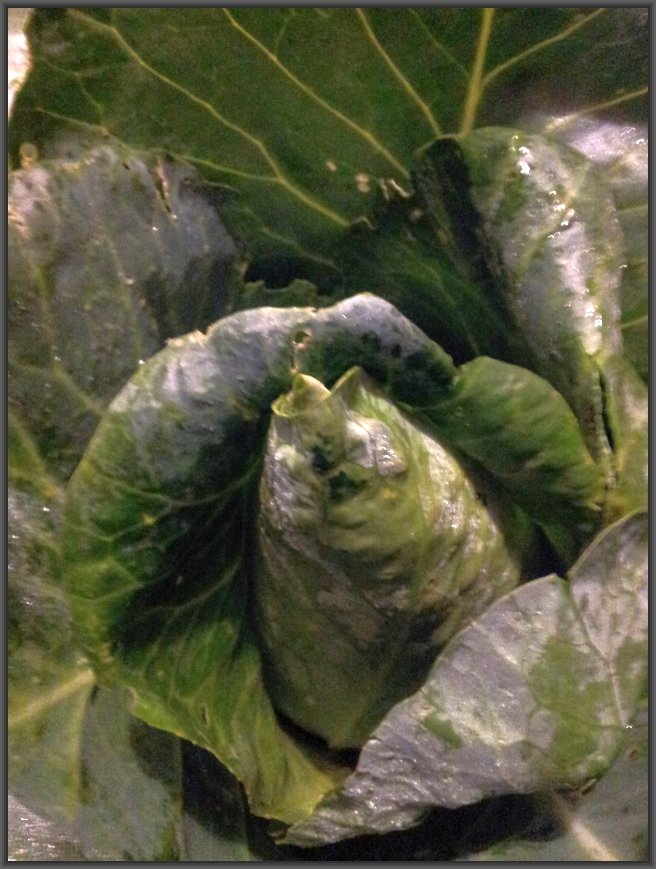
Ferments like sauerkraut, pickles and kombucha are good for the human body because they contain beneficial bacteria that when ingested, help to maintain the gut's microflora balance.
The tools you will need to make sauerkraut are:
- a sharp butcher's knife;
- a large mixing bowl;
- a 1 tbsp measuring spoon;
- a cabbage pounder;
- a 1 litre glass sealer jar with a rubber gasket and clamp-style locking lid.
The ingredients you will need are:
- a medium size cabbage;
- 2 tbsp of coarse sea salt;
- (You can add ginger, garlic, onion, caraway seeds or any other spice to taste, if you want to add different flavours to the sauerkraut.
Directions:
- Remove the outer leaves and set 2 aside. They will help to keep the cabbage submerged and covered by its natural juices, during long term storage.
- Chop the cabbage into small pieces.

- Put the cabbage in a big mixing bowl and add 2 tbsp of salt.
- Massage, knead and pound the cabbage to begin the process of releasing the juice from the cabbage.
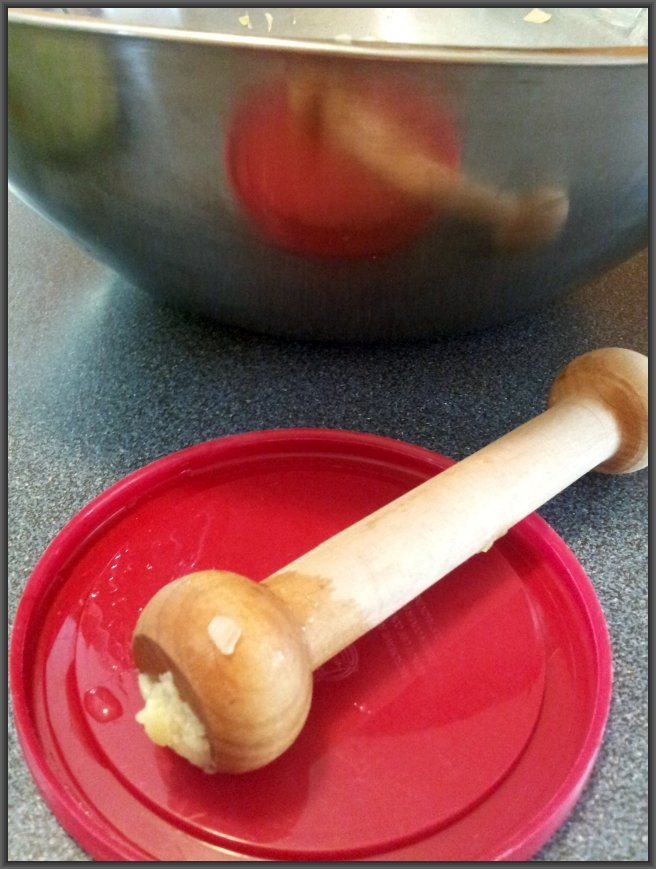
- Place the cabbage and juice in the glass sealer jar. (1 medium size cabbage will fill a 1 litre glass jar.)
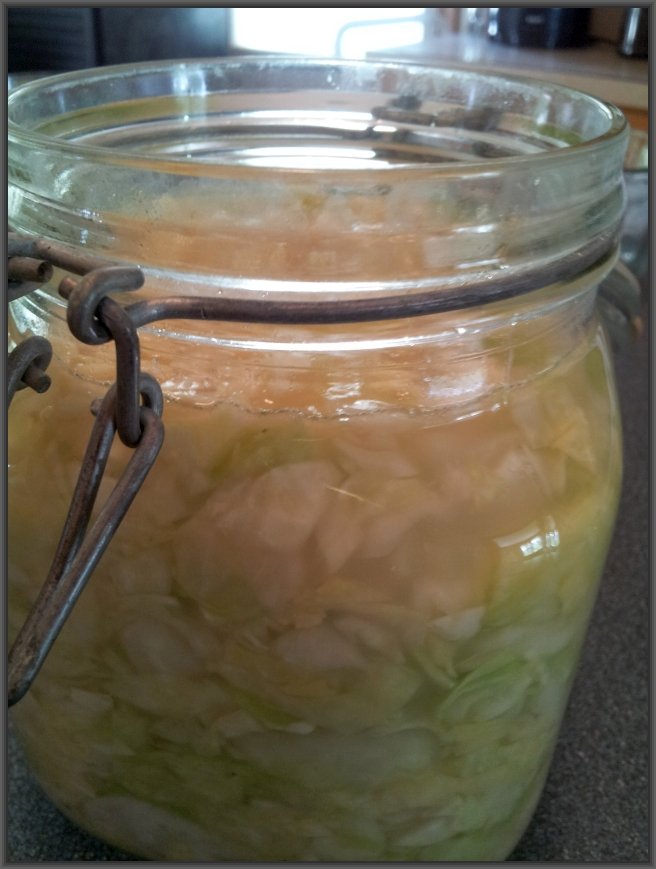
The juice that has been released should be covering the actual cabbage. If there isn't enough juice, let it sit for 30 minutes to give the salt more time to pull the juice from the chopped cabbage leaves and pound again until there is enough juice to completely cover all the cabbage. If there isn't enough juice the cabbage will not ferment properly and your cabbage will wrought.
(Trust me on this, it will smell like something has died. It's bad. Just make sure it has enough juice. I am speaking from a personal "kraut gone bad" experience. You're welcome. I'm always taking one for the team.)

This is what it should look like from the top. I added a 1/4 cup of chopped onion, 2 cloves of chopped garlic and approximately 1/4 inch piece of chopped fresh ginger root. I tossed this into the pounded cabbage and its juice before I packed the mixture into the jar.
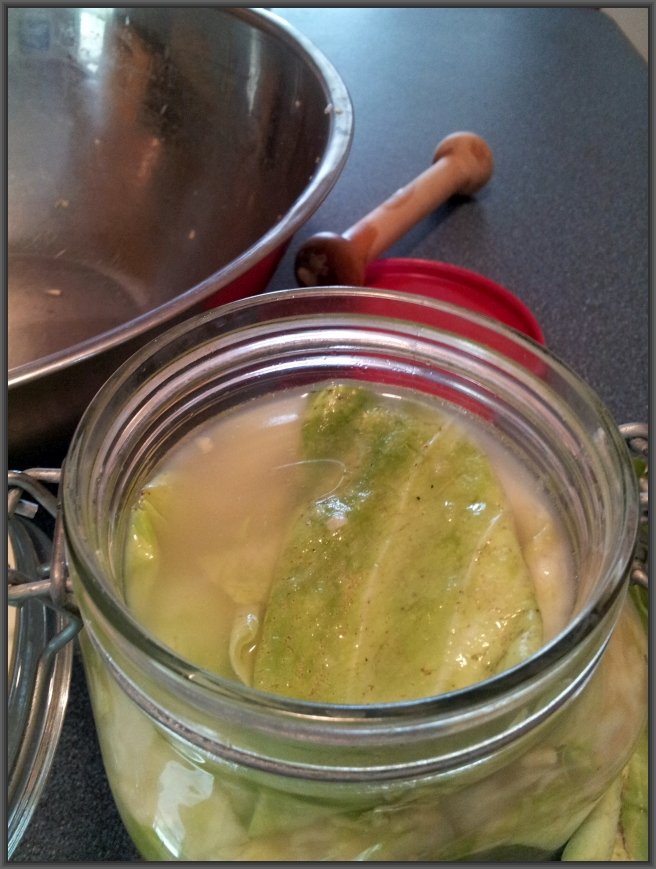
Fold the two cabbage leaves in half and use them to hold the chopped cabbage down in its own juice. I usually let mine sit in its glass jar on my counter, unrefrigerated, for at least 12 hours to encourage the fermentation or bacteria culture to grow. You will see small bubbles forming on the sides of the glass jar. This can take up to 3 days to occur. Once you see the bubbles, then, seal the lid. When I make a jar at a time, I keep it in my refrigerator. If I'm making a large amount at once, I will store it in a large pail in my cold storage room (which is located in my basement). The pail has an airlock on its lid that will let any extra gases release safely and you must use a weight to hold the larger volume of cabbage under its own juice. The cabbage leaf covering is not enough of a weight on its own for safe long-term storage.
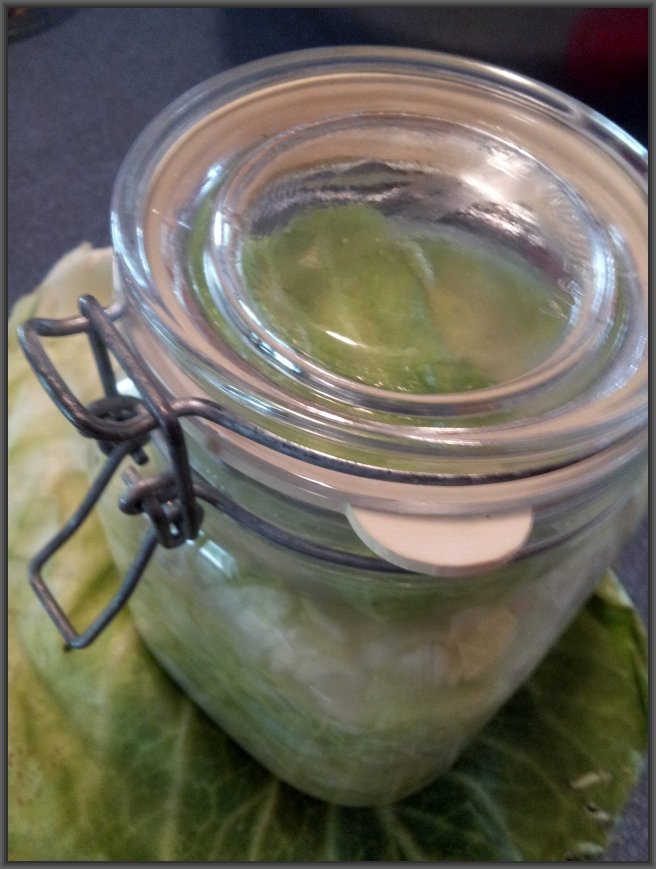
The juice of the cabbage will ferment and create a "pickled flavour". This juice will become loaded with beneficial bacterial which promotes fantastic gut health and the cabbage will feed the mitochondria of all the body's cells because it is rich in sulfur.
Once it's properly fermented which can take as little as 3 days, it will last indefinitely. It's one of those foods that gets better over time...as long as it is covered by its own juice.

This is my massive "kraut pounder". My husband made this for me from a limb of an ash tree.
It has been smugly named "The Ash Pounder" in my household...a very useful tool.
(Yeah, I'm a lucky girl. LOL)
I welcome your comments and invite you to follow me on my journey.
~ Rebecca Ryan
